AI-Powered Ad Copy Testing: Boost PPC Campaigns in 2025
In the dynamic realm of Pay-Per-Click (PPC) advertising, staying ahead in 2025 means embracing continuous optimization and innovation. Artificial Intelligence (AI) is revolutionizing how we refine ad campaigns, particularly through advanced ad copy testing. This article explores how you can harness various AI models, not just ChatGPT, to elevate your ad creatives and boost campaign results. We'll delve into different AI tools, structured testing methodologies, and a practical case study to showcase the impact of AI-driven ad copy optimization.
Key Insights
- AI provides a variety of models for ad copy testing, extending beyond ChatGPT.
- Effective ad copy testing involves hypothesis development, a structured approach, and thorough testing.
- Platforms like Langtail offer easy access to multiple AI models for ad copy creation.
- Performance metrics such as CTR, ad strength, and conversions are crucial for analyzing ad effectiveness.
- Utilize techniques like chain-of-thought prompting and expert simulation to enhance AI-generated ad copy.
The Evolving Landscape of AI in PPC Advertising
Beyond ChatGPT: Exploring a Diverse Range of AI Models
While ChatGPT is widely recognized, the world of AI offers a rich array of models tailored for various PPC tasks. Relying on a single model is like painting with only one color; to craft truly compelling ad campaigns, you need a full spectrum of AI tools. This includes models specialized in text generation, image creation, and even video and audio content.
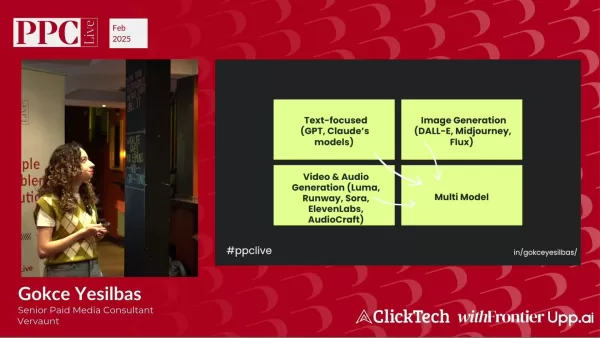
Let's break it down:
- Text-Focused Models: Large Language Models (LLMs) like GPT-4o and Claude 3.5 Sonnet excel at creating engaging and persuasive ad copy.
- Image Generation Models: Tools such as DALL-E, Midjourney, and Flux allow you to design visually appealing ad creatives.
- Video & Audio Generation Models: Platforms like Luma, Runway, Sora, ElevenLabs, and AudioCraft enable the creation of dynamic video and audio ads.
The future is leaning towards multi-modal models that can handle multiple input types (text, images, video) and generate diverse outputs. This versatility paves the way for more integrated and creative campaign designs. When selecting your AI model, consider your project goals, KPIs, and client expectations to ensure the technology aligns with your ad copy vision. To maximize AI's potential, leverage their unique strengths and features. The best ads often result from using the right combination of tools.
Why You Need More Than One AI Tool
In PPC advertising, sticking to just one AI model, like ChatGPT, is like limiting yourself to a single color. To create ads that truly stand out, you need a diverse palette of AI models to surpass the limitations of basic prompts. Each AI model specializes in different areas, and by utilizing their unique capabilities, you can craft ads that resonate more effectively in an increasingly saturated market.
Using multiple tools allows you to thoroughly test what works best and reach your clients more efficiently. Every AI tool has its inherent biases, and relying on a single tool for the entire ad creation process can restrict the reach and impact of your ads.
Structuring Your Ad Copy Testing Methodology
Formulating Your Hypothesis
The foundation of a successful ad copy testing campaign is a clear and testable hypothesis. This involves pinpointing specific questions you aim to answer through your tests. Here's how to approach it:
- Define Your Objective: What do you want to achieve? Is it higher click-through rates (CTR), improved ad strength, or more conversions? Your objective will guide your hypothesis.
- Craft Your Proposition: Develop a clear prediction based on your objective. For example:
- Hypothesis 1: Ad copy generated by [AI Model X] will achieve a higher CTR than human-written ad copy.
- Hypothesis 2: Ad copy generated by [AI Model A] will outperform ad copy generated by [AI Model B] in overall performance metrics.
- Hypothesis 3: Multi-lingual AI-generated ad copy tailored to each region's language will yield higher engagement metrics than an English-only campaign.
- Align with Goals: Ensure your hypothesis aligns with your campaign goals, KPIs, and client expectations. What does a successful campaign look like, and which tests will lead you there?
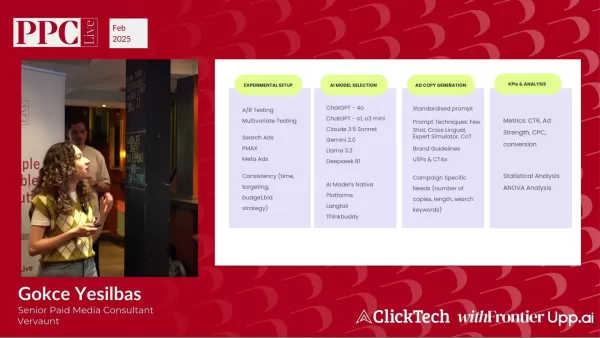
A Structured Approach to Ad Copy Testing
To make your ad copy testing effective, follow a structured methodology that includes four key stages:
- Experimental Setup:
- Choose your testing method: A/B testing or multivariate testing.
- Select the ad platforms: Search Ads, Performance Max (PMAX), or Meta Ads.
- Ensure consistency in targeting, budget, bid strategy, and timing.
- AI Model Selection:
- Decide which AI models to use: GPT-4o, Gemini 2.0, Claude 3.5 Sonnet, Llama 3.3, or deepseek R1.
- Consider using AI model native platforms or third-party tools like Langtail or Thinkbuddy.
- Ad Copy Generation:
- Develop a standardized prompt that aligns with brand guidelines.
- Use prompt techniques such as few-shot learning, cross-lingual translation, or expert simulation.
- Tailor ad copies to meet campaign-specific needs, including the number of copies, length, and search keywords. Clearly define your ideal ad copy traits, structure, and brand expectations to ensure creativity and effectiveness.
- KPIs & Analysis:
- Select key metrics: CTR, ad strength, cost per click (CPC), or conversion rate.
- Perform statistical analysis, such as ANOVA, to assess the significance of your results. Focus on the metrics that matter most to you, remembering that impressions don't always translate into conversions.

The Power of Expert Simulation for Ad Copy
To create compelling ad copy, it must reflect the mindset of an expert who understands the target audience, can use persuasive language effectively, and aligns with the ad's goals. That's why using expert simulation with AI is crucial.
Prompt Engineering: Crafting Effective Prompts
To maximize AI's potential, avoid simple prompts like "Write 15 headlines and 4 descriptions for Corendon Airline's Search ads." Instead, use detailed prompts crafted with expert consideration, such as:
"As a Google Search Ads Expert, create ad copies for Corendon Airlines’ google search campaign for flights to Palma De Mallorca from Germany. Please complete this task by thinking step-by-step and explaining each step. The goal is to increase ticket sales for flights to Palma De Mallorca."
Steps:
- Identify the target audience and the main selling points that will attract them.
- Consider Corendon Airlines’ example ad copies while creating new ones.
By providing more detail and context in your prompts, you ensure the ad copy is not only accurate but also impactful and tailored to your specific needs. This approach also gives you the creative freedom to test multiple strategies.
Unlocking the Potential of Langtail for Streamlined Ad Copy Testing
Langtail is a platform that offers numerous benefits for ad optimization. It provides direct access to various AI model APIs, giving you greater flexibility and control over ad creation. Langtail also bypasses word-count limitations of native AI tools, allowing you to craft more descriptive ads and tailor them to specific AI model characteristics. Its user-friendly structure makes it accessible for marketers and offers all-in-one access to multiple AI models.
AI Ad Models: Advantages and Disadvantages
Pros
- Increased Creativity: AI can generate fresh ad copy ideas.
- Scalability: AI can quickly produce a large volume of ad variations.
- Data-Driven Insights: AI provides data that is tested for accuracy.
- Increased Automation: Time can be saved during the process to focus on other areas.
Cons
- Lack of Brand Voice: AI-generated copy might not always align with brand guidelines.
- Dependence on Data: The ad copy heavily relies on data and pre-existing trends.
- Bias: AI models can have biased data which affects the ad copies generated.
- Limited Understanding: Lacks the critical thought to think outside the box.
FAQ
Is ChatGPT enough for all PPC tasks?
While ChatGPT is useful, it's not sufficient for all PPC tasks. A diverse range of AI models offers better optimization.
What key metrics should be monitored during ad copy testing?
Focus on CTR, ad strength, CPC, and conversion rates for performance analysis.
How long should ad copy tests run for?
Run A/B tests for a minimum of 4 weeks after the learning period.
What can I do to create better prompts?
I recommend using a chain-of-thought prompt combined with the expert simulator technique, as this will allow AI to create more tailored and effective ads.
Related Questions
What are the benefits of using a custom bidding strategy vs Smart Bidding?
Custom bidding strategies allow you to adjust bids based on specific business needs like sales volume or profit margin, aligning directly with your goals. However, they require constant manual adjustments and may not adapt quickly to market changes, making them ideal for expert ad designers. Smart Bidding, on the other hand, uses machine learning to set bids in real-time, optimizing for conversions or conversion value. It eliminates the need for manual bid adjustments, making it a solid automated system for targeting specific goals.
Related article
 AI-Powered Cover Letters: Expert Guide for Journal Submissions
In today's competitive academic publishing environment, crafting an effective cover letter can make the crucial difference in your manuscript's acceptance. Discover how AI-powered tools like ChatGPT can streamline this essential task, helping you cre
AI-Powered Cover Letters: Expert Guide for Journal Submissions
In today's competitive academic publishing environment, crafting an effective cover letter can make the crucial difference in your manuscript's acceptance. Discover how AI-powered tools like ChatGPT can streamline this essential task, helping you cre
 US to Sanction Foreign Officials Over Social Media Regulations
US Takes Stand Against Global Digital Content Regulations
The State Department issued a sharp diplomatic rebuke this week targeting European digital governance policies, signaling escalating tensions over control of online platforms. Secretary Marco
US to Sanction Foreign Officials Over Social Media Regulations
US Takes Stand Against Global Digital Content Regulations
The State Department issued a sharp diplomatic rebuke this week targeting European digital governance policies, signaling escalating tensions over control of online platforms. Secretary Marco
 Ultimate Guide to AI-Powered YouTube Video Summarizers
In our information-rich digital landscape, AI-powered YouTube video summarizers have become indispensable for efficient content consumption. This in-depth guide explores how to build a sophisticated summarization tool using cutting-edge NLP technolog
Comments (6)
0/200
Ultimate Guide to AI-Powered YouTube Video Summarizers
In our information-rich digital landscape, AI-powered YouTube video summarizers have become indispensable for efficient content consumption. This in-depth guide explores how to build a sophisticated summarization tool using cutting-edge NLP technolog
Comments (6)
0/200
![GeorgeKing]() GeorgeKing
GeorgeKing
 August 10, 2025 at 7:01:00 AM EDT
August 10, 2025 at 7:01:00 AM EDT
This AI ad testing stuff sounds like a game-changer for PPC! 🚀 I'm curious how it picks the best copy—does it just crunch numbers or actually 'get' what makes people click?


 0
0
![EdwardMartinez]() EdwardMartinez
EdwardMartinez
 June 1, 2025 at 3:44:06 AM EDT
June 1, 2025 at 3:44:06 AM EDT
Wow, AI ad testing sounds like a game-changer for PPC! 🚀 Excited to see how it optimizes campaigns, but wonder if it’ll make ads feel too robotic.


 0
0
![WillLopez]() WillLopez
WillLopez
 June 1, 2025 at 3:26:41 AM EDT
June 1, 2025 at 3:26:41 AM EDT
ИИ для тестирования рекламы – это круто! 😲 Интересно, как это изменит PPC, но не станет ли всё слишком автоматизированным?


 0
0
![RalphMitchell]() RalphMitchell
RalphMitchell
 June 1, 2025 at 1:24:29 AM EDT
June 1, 2025 at 1:24:29 AM EDT
AIで広告コピー検証ってすごいね!2025年のPPCが楽しみ😄 でも、AIが作る広告って人間味が薄れるかな?


 0
0
![WillieRodriguez]() WillieRodriguez
WillieRodriguez
 May 31, 2025 at 1:10:56 PM EDT
May 31, 2025 at 1:10:56 PM EDT
L’IA pour tester les pubs, c’est impressionnant ! 🧠 Ça va booster les campagnes, mais j’espère que ça laissera de la place à la créativité humaine.


 0
0
In the dynamic realm of Pay-Per-Click (PPC) advertising, staying ahead in 2025 means embracing continuous optimization and innovation. Artificial Intelligence (AI) is revolutionizing how we refine ad campaigns, particularly through advanced ad copy testing. This article explores how you can harness various AI models, not just ChatGPT, to elevate your ad creatives and boost campaign results. We'll delve into different AI tools, structured testing methodologies, and a practical case study to showcase the impact of AI-driven ad copy optimization.
Key Insights
- AI provides a variety of models for ad copy testing, extending beyond ChatGPT.
- Effective ad copy testing involves hypothesis development, a structured approach, and thorough testing.
- Platforms like Langtail offer easy access to multiple AI models for ad copy creation.
- Performance metrics such as CTR, ad strength, and conversions are crucial for analyzing ad effectiveness.
- Utilize techniques like chain-of-thought prompting and expert simulation to enhance AI-generated ad copy.
The Evolving Landscape of AI in PPC Advertising
Beyond ChatGPT: Exploring a Diverse Range of AI Models
While ChatGPT is widely recognized, the world of AI offers a rich array of models tailored for various PPC tasks. Relying on a single model is like painting with only one color; to craft truly compelling ad campaigns, you need a full spectrum of AI tools. This includes models specialized in text generation, image creation, and even video and audio content.

Let's break it down:
- Text-Focused Models: Large Language Models (LLMs) like GPT-4o and Claude 3.5 Sonnet excel at creating engaging and persuasive ad copy.
- Image Generation Models: Tools such as DALL-E, Midjourney, and Flux allow you to design visually appealing ad creatives.
- Video & Audio Generation Models: Platforms like Luma, Runway, Sora, ElevenLabs, and AudioCraft enable the creation of dynamic video and audio ads.
The future is leaning towards multi-modal models that can handle multiple input types (text, images, video) and generate diverse outputs. This versatility paves the way for more integrated and creative campaign designs. When selecting your AI model, consider your project goals, KPIs, and client expectations to ensure the technology aligns with your ad copy vision. To maximize AI's potential, leverage their unique strengths and features. The best ads often result from using the right combination of tools.
Why You Need More Than One AI Tool
In PPC advertising, sticking to just one AI model, like ChatGPT, is like limiting yourself to a single color. To create ads that truly stand out, you need a diverse palette of AI models to surpass the limitations of basic prompts. Each AI model specializes in different areas, and by utilizing their unique capabilities, you can craft ads that resonate more effectively in an increasingly saturated market.
Using multiple tools allows you to thoroughly test what works best and reach your clients more efficiently. Every AI tool has its inherent biases, and relying on a single tool for the entire ad creation process can restrict the reach and impact of your ads.
Structuring Your Ad Copy Testing Methodology
Formulating Your Hypothesis
The foundation of a successful ad copy testing campaign is a clear and testable hypothesis. This involves pinpointing specific questions you aim to answer through your tests. Here's how to approach it:
- Define Your Objective: What do you want to achieve? Is it higher click-through rates (CTR), improved ad strength, or more conversions? Your objective will guide your hypothesis.
- Craft Your Proposition: Develop a clear prediction based on your objective. For example:
- Hypothesis 1: Ad copy generated by [AI Model X] will achieve a higher CTR than human-written ad copy.
- Hypothesis 2: Ad copy generated by [AI Model A] will outperform ad copy generated by [AI Model B] in overall performance metrics.
- Hypothesis 3: Multi-lingual AI-generated ad copy tailored to each region's language will yield higher engagement metrics than an English-only campaign.
- Align with Goals: Ensure your hypothesis aligns with your campaign goals, KPIs, and client expectations. What does a successful campaign look like, and which tests will lead you there?

A Structured Approach to Ad Copy Testing
To make your ad copy testing effective, follow a structured methodology that includes four key stages:
- Experimental Setup:
- Choose your testing method: A/B testing or multivariate testing.
- Select the ad platforms: Search Ads, Performance Max (PMAX), or Meta Ads.
- Ensure consistency in targeting, budget, bid strategy, and timing.
- AI Model Selection:
- Decide which AI models to use: GPT-4o, Gemini 2.0, Claude 3.5 Sonnet, Llama 3.3, or deepseek R1.
- Consider using AI model native platforms or third-party tools like Langtail or Thinkbuddy.
- Ad Copy Generation:
- Develop a standardized prompt that aligns with brand guidelines.
- Use prompt techniques such as few-shot learning, cross-lingual translation, or expert simulation.
- Tailor ad copies to meet campaign-specific needs, including the number of copies, length, and search keywords. Clearly define your ideal ad copy traits, structure, and brand expectations to ensure creativity and effectiveness.
- KPIs & Analysis:
- Select key metrics: CTR, ad strength, cost per click (CPC), or conversion rate.
- Perform statistical analysis, such as ANOVA, to assess the significance of your results. Focus on the metrics that matter most to you, remembering that impressions don't always translate into conversions.

The Power of Expert Simulation for Ad Copy
To create compelling ad copy, it must reflect the mindset of an expert who understands the target audience, can use persuasive language effectively, and aligns with the ad's goals. That's why using expert simulation with AI is crucial.
Prompt Engineering: Crafting Effective Prompts
To maximize AI's potential, avoid simple prompts like "Write 15 headlines and 4 descriptions for Corendon Airline's Search ads." Instead, use detailed prompts crafted with expert consideration, such as:
"As a Google Search Ads Expert, create ad copies for Corendon Airlines’ google search campaign for flights to Palma De Mallorca from Germany. Please complete this task by thinking step-by-step and explaining each step. The goal is to increase ticket sales for flights to Palma De Mallorca."
Steps:
- Identify the target audience and the main selling points that will attract them.
- Consider Corendon Airlines’ example ad copies while creating new ones.
By providing more detail and context in your prompts, you ensure the ad copy is not only accurate but also impactful and tailored to your specific needs. This approach also gives you the creative freedom to test multiple strategies.
Unlocking the Potential of Langtail for Streamlined Ad Copy Testing
Langtail is a platform that offers numerous benefits for ad optimization. It provides direct access to various AI model APIs, giving you greater flexibility and control over ad creation. Langtail also bypasses word-count limitations of native AI tools, allowing you to craft more descriptive ads and tailor them to specific AI model characteristics. Its user-friendly structure makes it accessible for marketers and offers all-in-one access to multiple AI models.
AI Ad Models: Advantages and Disadvantages
Pros
- Increased Creativity: AI can generate fresh ad copy ideas.
- Scalability: AI can quickly produce a large volume of ad variations.
- Data-Driven Insights: AI provides data that is tested for accuracy.
- Increased Automation: Time can be saved during the process to focus on other areas.
Cons
- Lack of Brand Voice: AI-generated copy might not always align with brand guidelines.
- Dependence on Data: The ad copy heavily relies on data and pre-existing trends.
- Bias: AI models can have biased data which affects the ad copies generated.
- Limited Understanding: Lacks the critical thought to think outside the box.
FAQ
Is ChatGPT enough for all PPC tasks?
While ChatGPT is useful, it's not sufficient for all PPC tasks. A diverse range of AI models offers better optimization.
What key metrics should be monitored during ad copy testing?
Focus on CTR, ad strength, CPC, and conversion rates for performance analysis.
How long should ad copy tests run for?
Run A/B tests for a minimum of 4 weeks after the learning period.
What can I do to create better prompts?
I recommend using a chain-of-thought prompt combined with the expert simulator technique, as this will allow AI to create more tailored and effective ads.
Related Questions
What are the benefits of using a custom bidding strategy vs Smart Bidding?
Custom bidding strategies allow you to adjust bids based on specific business needs like sales volume or profit margin, aligning directly with your goals. However, they require constant manual adjustments and may not adapt quickly to market changes, making them ideal for expert ad designers. Smart Bidding, on the other hand, uses machine learning to set bids in real-time, optimizing for conversions or conversion value. It eliminates the need for manual bid adjustments, making it a solid automated system for targeting specific goals.
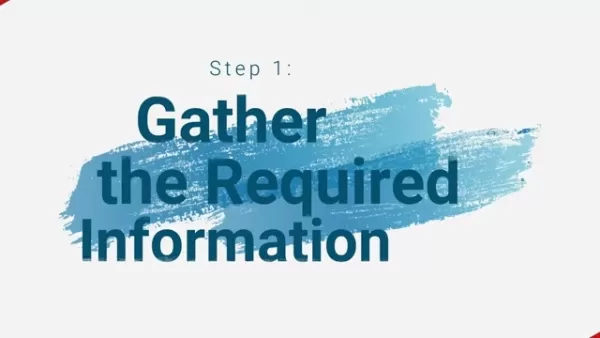 AI-Powered Cover Letters: Expert Guide for Journal Submissions
In today's competitive academic publishing environment, crafting an effective cover letter can make the crucial difference in your manuscript's acceptance. Discover how AI-powered tools like ChatGPT can streamline this essential task, helping you cre
AI-Powered Cover Letters: Expert Guide for Journal Submissions
In today's competitive academic publishing environment, crafting an effective cover letter can make the crucial difference in your manuscript's acceptance. Discover how AI-powered tools like ChatGPT can streamline this essential task, helping you cre
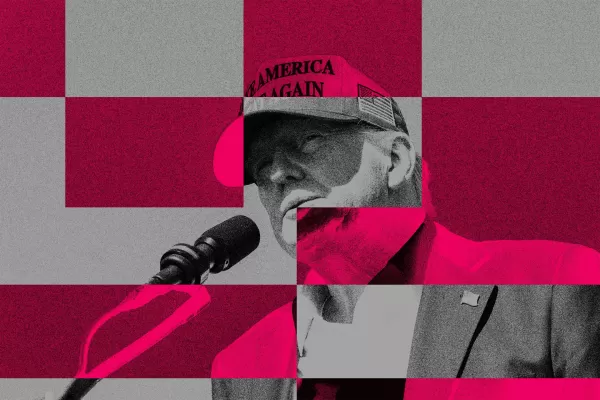 US to Sanction Foreign Officials Over Social Media Regulations
US Takes Stand Against Global Digital Content Regulations
The State Department issued a sharp diplomatic rebuke this week targeting European digital governance policies, signaling escalating tensions over control of online platforms. Secretary Marco
US to Sanction Foreign Officials Over Social Media Regulations
US Takes Stand Against Global Digital Content Regulations
The State Department issued a sharp diplomatic rebuke this week targeting European digital governance policies, signaling escalating tensions over control of online platforms. Secretary Marco
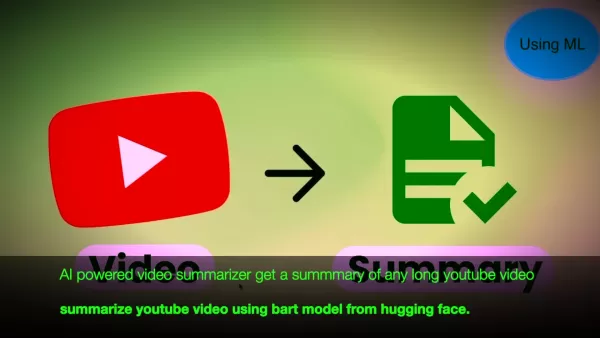 Ultimate Guide to AI-Powered YouTube Video Summarizers
In our information-rich digital landscape, AI-powered YouTube video summarizers have become indispensable for efficient content consumption. This in-depth guide explores how to build a sophisticated summarization tool using cutting-edge NLP technolog
Ultimate Guide to AI-Powered YouTube Video Summarizers
In our information-rich digital landscape, AI-powered YouTube video summarizers have become indispensable for efficient content consumption. This in-depth guide explores how to build a sophisticated summarization tool using cutting-edge NLP technolog
 August 10, 2025 at 7:01:00 AM EDT
August 10, 2025 at 7:01:00 AM EDT
This AI ad testing stuff sounds like a game-changer for PPC! 🚀 I'm curious how it picks the best copy—does it just crunch numbers or actually 'get' what makes people click?


 0
0
 June 1, 2025 at 3:44:06 AM EDT
June 1, 2025 at 3:44:06 AM EDT
Wow, AI ad testing sounds like a game-changer for PPC! 🚀 Excited to see how it optimizes campaigns, but wonder if it’ll make ads feel too robotic.


 0
0
 June 1, 2025 at 3:26:41 AM EDT
June 1, 2025 at 3:26:41 AM EDT
ИИ для тестирования рекламы – это круто! 😲 Интересно, как это изменит PPC, но не станет ли всё слишком автоматизированным?


 0
0
 June 1, 2025 at 1:24:29 AM EDT
June 1, 2025 at 1:24:29 AM EDT
AIで広告コピー検証ってすごいね!2025年のPPCが楽しみ😄 でも、AIが作る広告って人間味が薄れるかな?


 0
0
 May 31, 2025 at 1:10:56 PM EDT
May 31, 2025 at 1:10:56 PM EDT
L’IA pour tester les pubs, c’est impressionnant ! 🧠 Ça va booster les campagnes, mais j’espère que ça laissera de la place à la créativité humaine.


 0
0





























